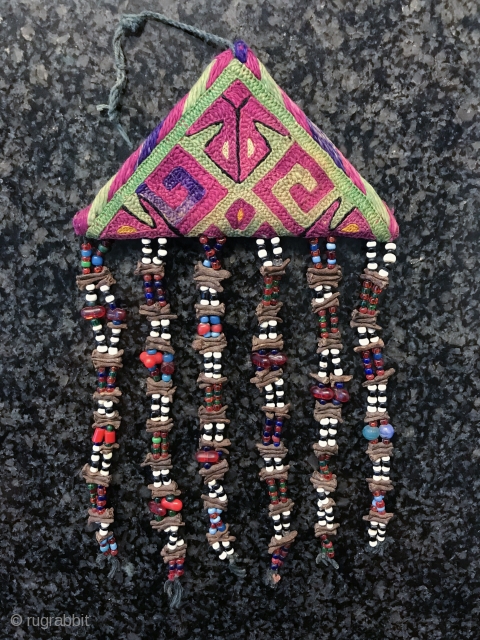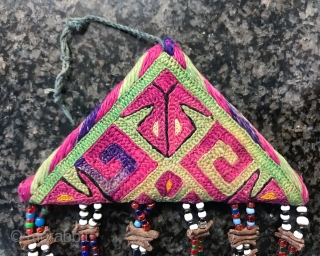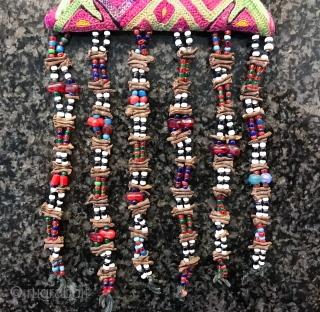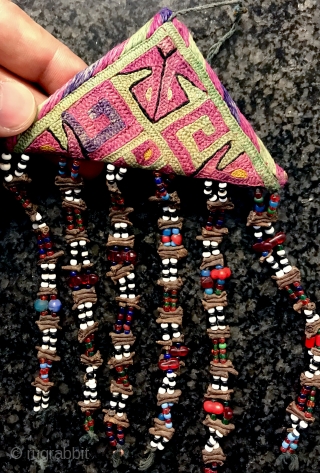Back
An archaic Antique Ersari Turkoman / Turkmen Talismanic double sided silk embroidery moska, dating between late 19th century and early 1900s. Such fine triangular silk embroideries were known as moskas and to made to serve the superstitious beliefs of the Turkoman cultures. Moskas were attached to garments of children (the future hope of the tribe) in the hope to bring protection to them. Inside these amulets sacred protective scriptures are concealed aimed to protect the child. At best they can be extraordinary pieces of textile art. What makes this beautiful example different is that the tassels are a combination of glass beads and spices. Sometimes we see spices used in Central Asian textiles or jewellery. The reason is perhaps because of good scent and their disease fighting power. The design is classic quad bird motifs and repeats identically on both sides. size: 10cm x 5.5cm (4" x 2.25") with tassels extending 13cm (5").
price:
SOLD
- Home
- Antique Rugs by Region
- Category
- Profiles
- Post Items Free
- Albums
- Benaki Museum of Islamic Art
- Budapest: Ottoman Carpets
- Gulbenkian Museum
- Islamic Carpets. Brooklyn
- Islamic Textiles. Brooklyn
- Konya Museum: Rugs
- MKG, Hamburg
- MMA: Caucasian Carpets
- MMA: Mamluk Carpets
- MMA: Mughal Indian Carpets
- MMA: Ottoman Carpets
- MMA: Safavid Persian Carpets
- MMA: Turkmen Rugs
- McCoy Jones Kilims
- Ottoman textiles. Met
- Philadelphia Museum
- Rugs and Carpets: Berlin
- Seljuqs at the Met
- TIEM, Istanbul: Carpets
- V&A: Classical Carpets
- Vakiflar Carpets: Istanbul
- Baluch Rugs: Indianapolis
- Gallery Exhibitions
- Jaf an Exhibition
- Alberto Levi Gallery
- Andean Textile
- Christie's London: 2016
- Francesca Galloway
- HALI at 40
- ICOC Washington, DC 2018
- Jajims of the Shahsavan
- London Islamic Week April, 2018
- Mongolian Felts
- Navajo Rugs: JB Moore
- Persian Piled Weavings
- SF Tribal & Textile Art Show 2020
- SF Tribal 2019
- Sotheby's: C. Alexander
- Turkish Prayer Rugs
- Turkmen Main Carpets ICOC 2007











